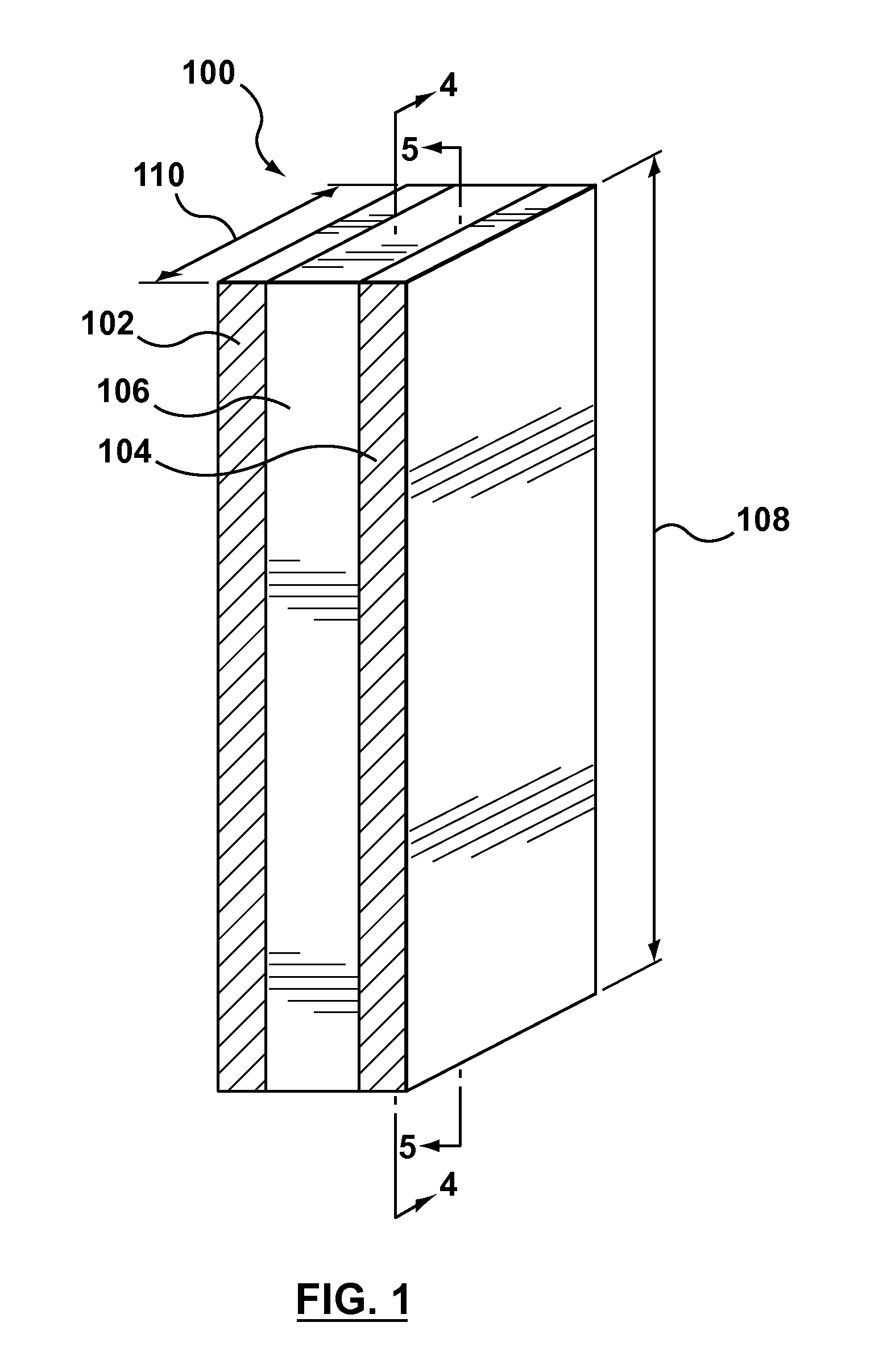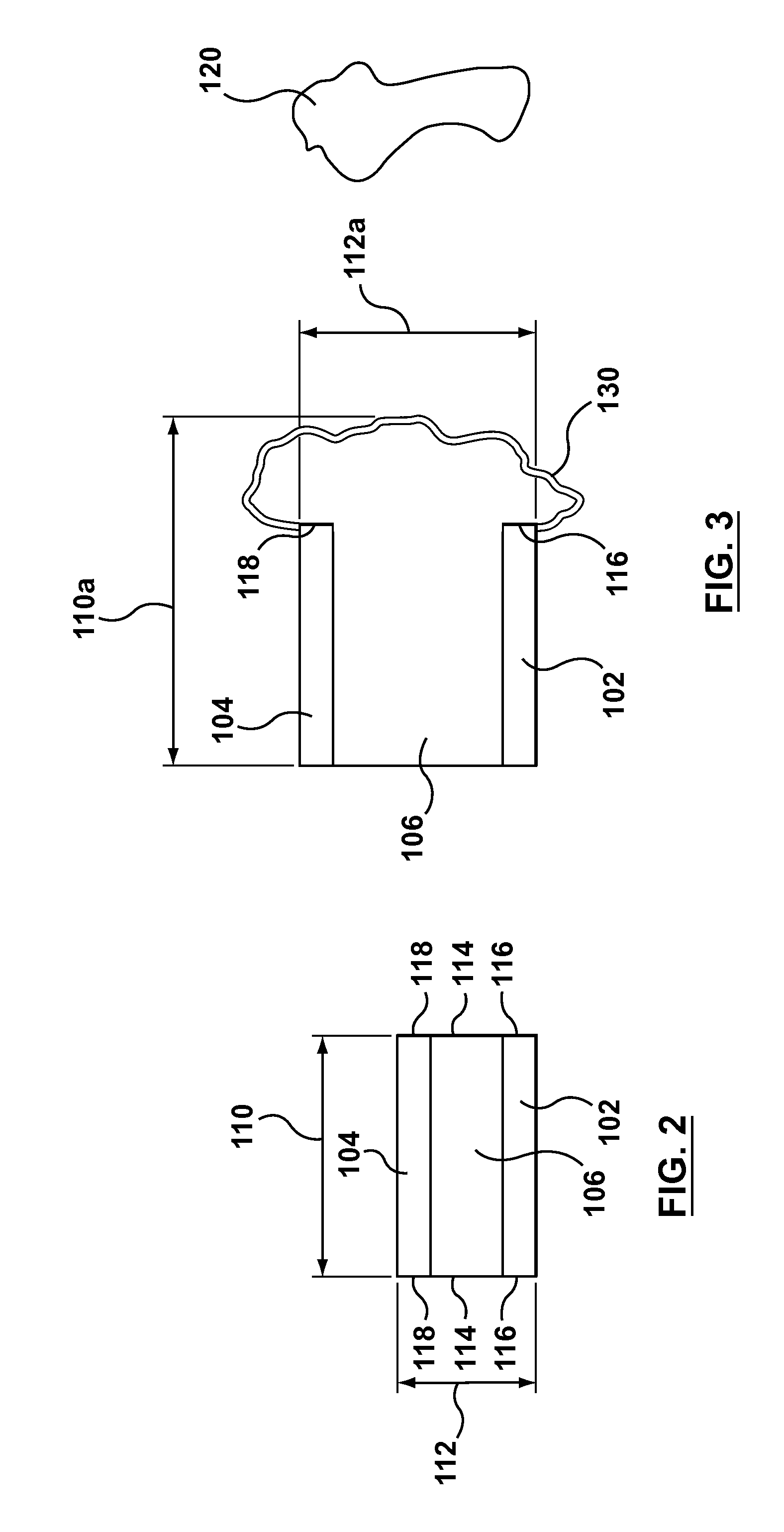Intumescent fire door edge system
a fire door and intumescent technology, applied in the field of intumescent materials and components, can solve the problems of increasing the gap between the edges, reducing the creep of the intumescent layer, and charging of the wood edge, so as to and reduce the creep of the intumescent layer. the effect of high creep susceptibility
- Summary
- Abstract
- Description
- Claims
- Application Information
AI Technical Summary
Benefits of technology
Problems solved by technology
Method used
Image
Examples
Embodiment Construction
[0035]Referring to FIGS. 1-5, an intumescent strip 100 includes first and second layers 102, 104 of non-intumescent material bonded on opposing sides of a third layer 106 formed from an intumescent material. The intumescent strip 100 is configured to be attached to an edge of a fire door and has a length 108 and a width 110 that generally correspond to the dimensions of the portion of the fire door to be covered. The intumescent strip 100 is expandable from a non-expanded configuration (FIG. 2), to an expanded configuration (FIG. 3) when the strip 100 is exposed to high temperatures. The assembled strip 100 has variable strip thickness 112, which will be described in greater detail below.
[0036]The first and second layers 102, 104 are not intumescent and are formed from a thermoset sheet material, such as a high pressure phenolic laminate. Examples of high pressure phenolic laminates include paper-melamine laminates, Arborite® and Formica®.
[0037]The thickness 136, 138 of each layer c...
PUM
| Property | Measurement | Unit |
|---|---|---|
| Fraction | aaaaa | aaaaa |
| Temperature | aaaaa | aaaaa |
| Pressure | aaaaa | aaaaa |
Abstract
Description
Claims
Application Information
 Login to View More
Login to View More - R&D
- Intellectual Property
- Life Sciences
- Materials
- Tech Scout
- Unparalleled Data Quality
- Higher Quality Content
- 60% Fewer Hallucinations
Browse by: Latest US Patents, China's latest patents, Technical Efficacy Thesaurus, Application Domain, Technology Topic, Popular Technical Reports.
© 2025 PatSnap. All rights reserved.Legal|Privacy policy|Modern Slavery Act Transparency Statement|Sitemap|About US| Contact US: help@patsnap.com



